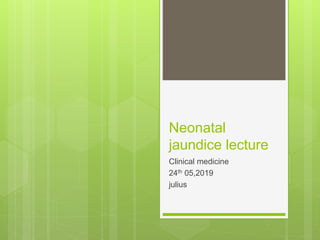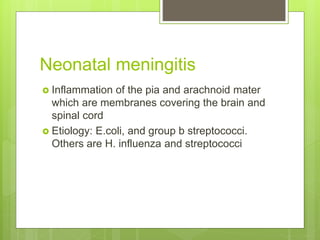Over 60% of newborns experience jaundice due to the normal physiological breakdown of red blood cells in the first few days after birth. Unconjugated bilirubin can potentially be deposited in the brain, causing kernicterus. The liver's ability to conjugate and excrete bilirubin is impaired in preterm and ill newborns compared to healthy full term babies. Conditions like sepsis, hemolytic disease, or liver dysfunction can also cause pathological jaundice beyond the first 2 weeks of life. Timely diagnosis and treatments like phototherapy and exchange transfusion are important to prevent bilirubin encephalopathy.












































































